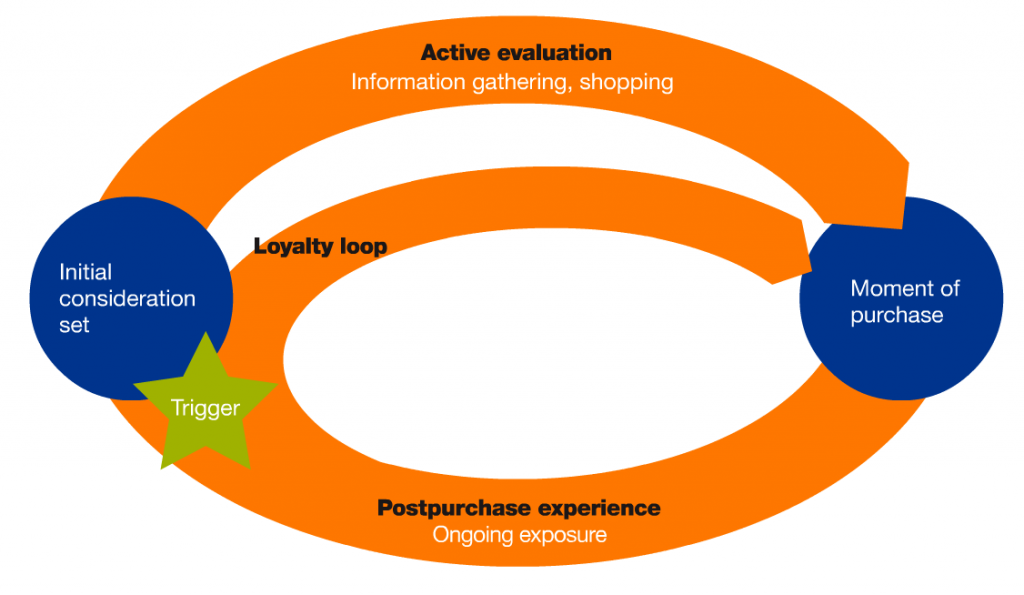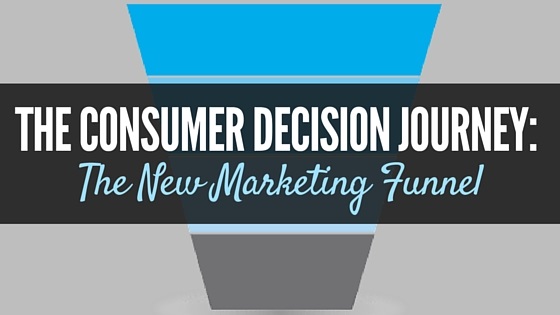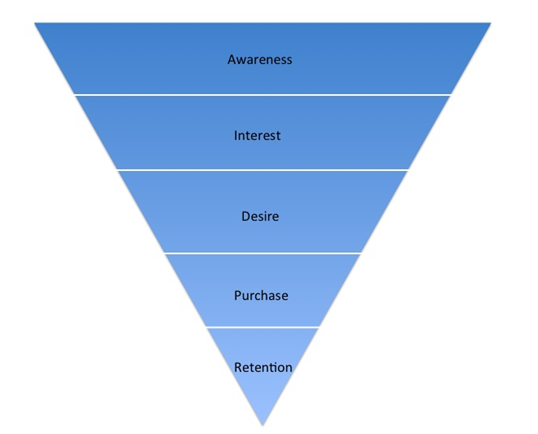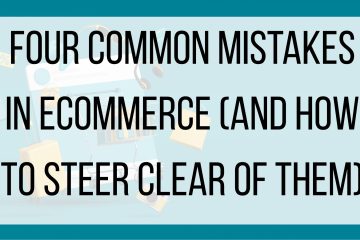The Consumer Decision Journey: The New Marketing Funnel
Traditionally, the consumer decision journey has always been depicted as a funnel. The funnel served as the primary model for how a prospective customer moves from initial brand awareness to purchase. But, the funnel concept was created long before social media, blogging, or digital content marketing ever existed, so is it still relevant today?
In the past, brands were taught to push marketing toward consumers at each stage of the process to influence their behavior. These consumers formed brand impressions from touchpoints such as advertisements, word of mouth, and product experiences. This is still true today, but consumers rarely take such a linear journey. They are moving outside the funnel by changing the way they research and buy products.
Today’s consumers move through a set of touchpoints before, during, and after a purchase. They are no longer evaluating or making purchases by how much marketing messages are able to sway them. It’s a much more complicated conversation because they are actively seeking out information on their own. While the funnel approach may have been successful in the past, it cannot adapt to today’s changing consumer expectations. It fails to capture all the touch points and key buying factors. The approach also has very little regard for the post-purchase experience.
As a result, McKinsey & Company (a worldwide management consulting firm) established the new decision-making journey. The new decision journey is much more complex than a linear funnel, with multiple inlets of information. The approach explains the decision-making process as a loop within a loop, with one initial purchase decision journey that feeds into a loyalty cycle after purchase.
The Customer Decision Journey:

The main difference between the traditional funnel and the decision journey is the emphasis placed on building and maintaining relationships with consumers. It’s not about shaping a consumer’s journey through messaging that is only relevant because it pertains to a predetermined stage like the traditional funnel suggest. It’s about being able to identify where a consumer is in the decision journey and provide the most relevant messaging for that given moment. This new approach also accounts for experiences consumers have with brands that affect their long-term loyalty after the initial purchase.
Each touch point a brand has with a consumer needs to deliver a clear, consistent message. It’s also an opportunity for brands to be in the right place at the right time with the right message. By understanding the decision journey, brands stand much greater chance of reaching consumers at moments of maximum influence.





1 Comment
MoraJuicy · June 20, 2018 at 11:15 pm
I often visit your website and have noticed that you don’t update it often. More frequent updates will give your
blog higher rank & authority in google. I know that writing articles takes a lot
of time, but you can always help yourself
with miftolo’s tools which will shorten the time of creating an article to a few
seconds.